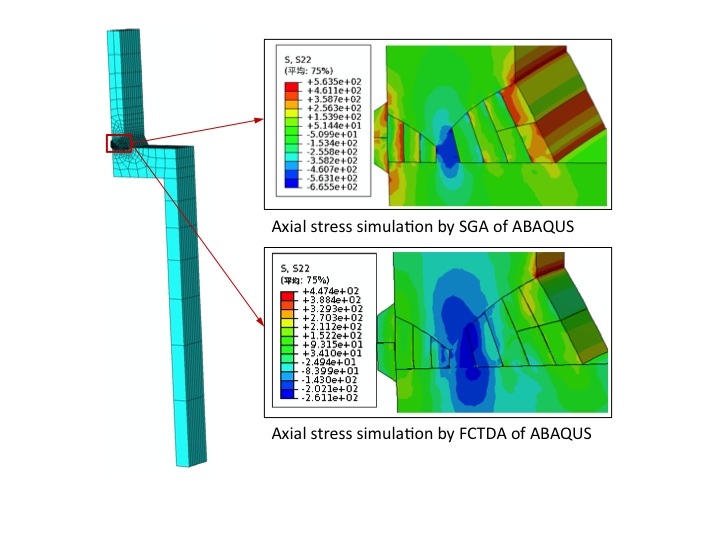![]() Research Group for Nuclear Materials Modeling
Research Group for Nuclear Materials Modeling
Location: JAEA > Nucl. Sci. and Eng. Direct. > Fuels and Mater. Eng. > Res. Group for Nucl. Mater. Modeling
Many accidents have occurred in nuclear power plants due to the intergranular stress corrosion cracking (IGSCC) in the heat affected zone (HAZ) of welded joint of the core shroud of boiling water reactors (BWRs) in past years. The IGSCC is considered to be caused by the synergistic roles of corrosion environment, neutron irradiation and the welding residual stress. After several decades, the degradation of Type 316L low carbon stainless steel used in the core shroud occurs due to the neutron irradiation and thermal cycles. The degradation can be referred to the irradiation hardening, segregation of the local chemical composition at grain boundaries and swelling. The synergistic effects of those eventually lead to the initiation and propagation of the irradiation-assisted stress corrosion cracking (IASCC) in core shroud for long operation.
The HAZ of the girth seams H6a in the core shroud are sensitive to the stress corrosion cracking. We are focusing on the weld residual stress field around the girth seam H6a in the core shroud as weld. The analysis work adopted different approaches in ABAQUS to simulate the weld residual stress, and they are Static General Analysis (SGA) and Fully Coupled Temperature-Displacement Analysis (FCTDA) respectively. The former is much simple to finish the progress while cannot obtain much accurate results at the boundaries of beads due to the discontinuous temperature field in the model. The later analysis gave the much accurate results comparing with the experimental results. The axial stress field in the crossing section of the wall of the core shroud was also clarified.

Figure 1. Static general analysis (SGA) and fully coupled temperature-displacement analysis (FCTDA) on a core shroud model containing girth seam H6a by ABAQUS


In this study, the stress intensity factor of the SCC was estimated using the methods of semi-elliptical shape surface crack in API RP579. The guide of API provides two methods to calculate the stress intensity factor. The results of tension-compression-tension axial weld residual stress in weldment H6a of a core shroud by ABAQUS were used. On the basic of the axial stress at the crack tip, we calculated the stress intensity factor, and made comparison of the estimated results by the two methods.

High Cr steels are the primary material in power station under a certain inner pressure at high temperatures. After long term servicing, Type ? cracks are found in the fine-grained heat affected zone of weld component. It is believed that the initiation, growth and coalescence of voids caused the crack, and final damage of the component. We conducted the creep simulation to study the mechanical parameters. With comparing the measuring results of creep voids, the conjunct roles of stress triaxial factor and equivalent creep stain caused the initiation of creep voids. On the basis of the conclusion, we modified the constitutive equations for evaluating creep damage.
Studying initiation and propagation of creep voids are very important for evaluating creep damage of high temperature components. We observed and counted the creep voids with Laser Microscope, while the work becomes difficult when the voids smaller than 1um in sized. We are using Small-Angle-Neutron-Scattering (SANS) method can to measure the defects. SANS data can reflect the creep voids lower than 500nm in size. This work is useful and important for providing more data of voids in the early creep stage.